#ExtinctAnimals
Explore tagged Tumblr posts
Text
Evolution of Animals – The Elephant 🐘 From small, semi-aquatic mammals to Earth's largest land animals, elephants represent a stunning journey through time. One lineage. Millions of years. Still evolving. A testament to nature’s power to adapt, diversify, and endure.
#Evolution#AnimalEvolution#Elephants#Wildlife#Nature#Biodiversity#Zoology#Paleontology#Science#ScienceCommunication#SciComm#NaturalHistory#WildlifeConservation#ExtinctAnimals#PrehistoricLife#AncientAnimals#Adaptation#SurvivalOfTheFittest#EvolutionInAction#EarthHistory#LifeOnEarth#Mammals#Megafauna#Species#EcoEducation#ScienceFacts#AnimalFacts#Conservation#ScientificDiscovery#Ecosystems
13 notes
·
View notes
Text
12,500 Years Later Dire Wolves Reborn : Return of the Ice Age Predator
Colossal Biosciences has produced three dire wolf pups—two males and one female—using gene editing, cloning, and ancient DNA from fossils dated 13,000 to 72,000 years old. By editing 14 genes in gray wolf cells to match dire wolf traits like thick fur, stronger jaws, and broader skulls, scientists recreated the dire wolf phenotype. The embryos were implanted into domestic dogs.
The pups, born in late 2024 and early 2025, now live on a secure 2,000-acre site under strict oversight. While the animals are about 99.9% gray wolf, Colossal claims this is the first real proof of de-extinction in practice and a step toward reviving species like the mammoth and dodo. #direwolves #extinctanimals #sciencenews #biology #genetics #wildlife #conservation #DeExtinctionProject #animalscience #futureofscience #DireWolfDeExtinction #colossalbiosciences #geneticengineering #ExtinctSpeciesRevival #ancientdna #crisproducciones #DeExtinctionTechnology #wildlifeconservation #PleistoceneFauna #ResurrectionScience #bioengineering
#direwolves#extinctanimals#sciencenews#biology#genetics#wildlife#conservation#DeExtinctionProject#animalscience#futureofscience#DireWolfDeExtinction#colossalbiosciences#geneticengineering#ExtinctSpeciesRevival#ancientdna#crisproducciones#DeExtinctionTechnology#wildlifeconservation#PleistoceneFauna#ResurrectionScience#bioengineering#research#science#nature#biotechnology#technology#health#innovation
3 notes
·
View notes
Text
Dire Wolves Return: Scientists Create Puppies From Extinct DNA 🐺✨
Exciting news for science lovers! 🌍 Researchers have successfully brought back puppies by recreating the DNA of the extinct dire wolf. Could this be the future of genetic engineering? Find out more about this groundbreaking study and what it could mean for the animal kingdom! 🧬🐾
#DireWolves#ExtinctAnimals#GeneticEngineering#ScienceNews#DNA#Innovation#AnimalScience#PuppyLove#Rewilding#TechInNature#FutureOfScience#Nature#WildlifeConservation#Biotechnology#Genetics
2 notes
·
View notes
Text
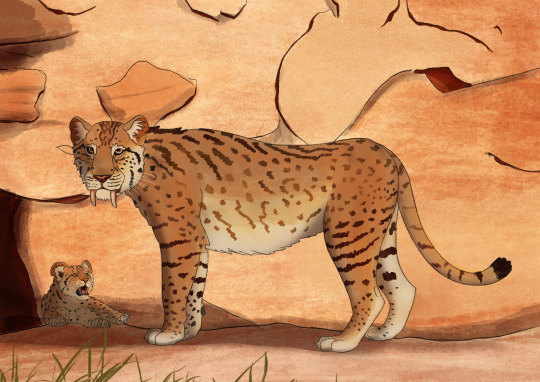
Febroary day 8 - Prehistoric
Here is my Prehistoric cat, decided to draw a Amphimachairodus (at least my interpetation)
Hope you enjoy my illustration!
Be sure to leave a like and follow me for more wildcats this month!
#Febroary#febroary2024#febroarychallenge#prehistoric#amphimachairodus#sabertoothcat#bigcatart#bugcat#bigcatartwork#prehistoriccat#extinctanimals#animals#animalart#animalillustration
5 notes
·
View notes
Text

Building a Dodo Bird. 8" x 10" acrylic on paper. https://jschulerart.etsy.com/listing/398124369 #painting #dodo #taxidermy #extinctanimals #naturalhistory
1 note
·
View note
Text
🐺 10 Mind-Blowing Facts About the Dire Wolf You Didn’t Know
Explore the chilling reality of this Ice Age predator—and discover what connects it to spyglass telescopes and explorers.
The Legend Beneath the Bones
When we think of wolves, we picture the gray wolf—stealthy, smart, a skilled predator. But over 10,000 years ago, North and South America were dominated by a creature more fearsome and mysterious: the dire wolf (Canis dirus).
Pop culture, especially Game of Thrones, resurrected this ancient predator, turning it into a mythical beast. But the real dire wolf was even more fascinating, and recent scientific discoveries have completely rewritten its history.
This article dives into 10 mind-blowing facts about the dire wolf—uncovering lesser-known truths, relating its story to real-world exploration tools like spyglass telescopes, and ending with a surprising twist from the world of vintage collectibles.
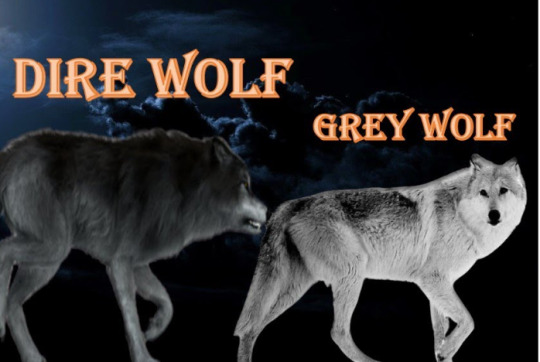
Let’s set our sights like ancient explorers through a brass spyglass and take a clear look at the world of the dire wolf!
🐾 1. Dire Wolves Were Bigger—and Heavier—Than Modern Wolves
Dire wolves weren’t just larger versions of today’s gray wolves—they were bulkier, more muscular, and built for bone-crushing power.
Weight: Up to 150 lbs (68 kg), compared to 80–100 lbs for a gray wolf.
Length: Around 5 feet long, not including the tail.
Jaw Strength: Exceptionally strong, built to crush large bones.
This robust build helped dire wolves bring down massive prey like Ice Age bison and giant ground sloths. While modern wolves rely on speed and pack coordination, dire wolves could afford to fight rough and solo when needed.
🔑 Keyword Highlight: Dire wolf size comparison, prehistoric predator strength
🧬 2. They Weren’t Actually Wolves at All
Despite their name, dire wolves weren’t just ancient wolves. In fact, they weren't even closely related to today’s wolves.
A 2021 DNA study revealed that dire wolves belonged to a separate evolutionary branch that diverged from wolves over 5 million years ago. This makes them wolves in name only—more like distant cousins than direct ancestors.
Scientists believe they evolved independently in the Americas, while gray wolves evolved in Eurasia. So when gray wolves migrated into North America, the stage was set for intense competition.
🧠 Fun Fact: The name Canis dirus means “fearsome dog.”
🔑 Keyword Highlight: Dire wolf evolution, DNA discovery, Canis dirus lineage
🐃 3. Dire Wolves Hunted in Packs—but Took Down Bigger Prey
Just like modern wolves, dire wolves were pack hunters, but their prey was often much larger and more dangerous.
Prey included giant sloths, mammoths, and prehistoric camels.
Fossil evidence shows many dire wolves died together—suggesting coordinated hunting.
The harsh Ice Age climate and intense predator competition meant dire wolves had to hunt smart and together—survival was a team effort.
🔑 Keyword Highlight: Dire wolf pack behavior, Ice Age predators
🦴 4. Their Fossils Tell a Gruesome Story at La Brea Tar Pits
One of the most iconic fossil sites in the world, the La Brea Tar Pits in California, has produced over 4,000 dire wolf fossils.
Why so many?
Animals got stuck in the tar.
Predators (like dire wolves) were attracted to the trapped prey.
They too got stuck—and fossilized.
These fossils are a treasure trove for scientists, offering insights into the dire wolf’s bone structure, diet, injuries, and even social behavior.
🔭 Just like explorers use spyglass telescopes to study distant landscapes, paleontologists use fossil clues to uncover ancient worlds hidden beneath our feet.
🔑 Keyword Highlight: La Brea Tar Pits dire wolf fossils, dire wolf skeleton
💥 5. Their Bite Could Crush Bones
Dire wolves had one of the strongest bites of any canid (dog-like species) in history.
Capable of crushing thick bones to reach marrow.
Evolutionary advantage in times of scarcity—nothing went to waste.
This powerful bite force set them apart from wolves, coyotes, and even modern big cats in terms of feeding efficiency.
🔑 Keyword Highlight: Dire wolf bite force, prehistoric carnivore adaptations
🌎 6. They Roamed Across Two Continents
Dire wolves were widespread—far more so than many predators of their time.
Lived across North and South America.
Found in environments ranging from forests to open plains.
Adapted to diverse climates—showing their resilience and dominance.
Their broad range made them one of the top Ice Age predators, second only to saber-toothed cats.
🔑 Keyword Highlight: Dire wolf habitat, prehistoric North America predators
❄️ 7. Climate Change Helped Cause Their Extinction
Around 9,000 years ago, dire wolves vanished. Scientists believe a combination of factors led to their extinction:
Climate warming ended the Ice Age.
Large prey like mammoths and bison also disappeared.
New predators (gray wolves and humans) competed for the same resources.
Unlike gray wolves, which could adapt to smaller prey and changing environments, dire wolves were too specialized to survive the shift.
🔑 Keyword Highlight: Dire wolf extinction, end of the Ice Age, prehistoric survival
📺 8. Game of Thrones Turned Them Into Pop Culture Legends
Dire wolves roared back into public consciousness thanks to Game of Thrones.
Each Stark child received a dire wolf pup—loyal, fierce, magical.
In reality, dire wolves weren’t quite that big, but they were just as fierce.
This rebranding sparked massive online interest, fan art, and even search spikes in “real dire wolves”.
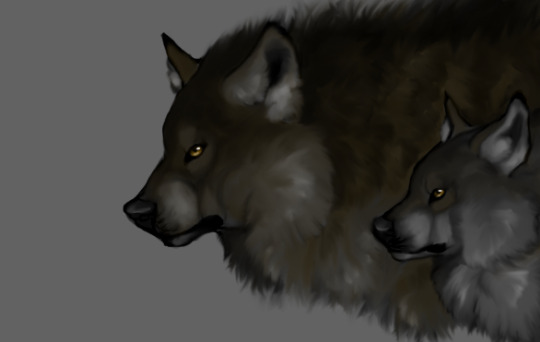
in “real dire wolves”.
🔑 Keyword Highlight: Dire wolf Game of Thrones, pop culture prehistoric animals
🧪 9. DNA Research Shattered Previous Theories
The groundbreaking 2021 study, based on ancient DNA, forced scientists to rethink everything about dire wolves:
They're more closely related to African jackals and foxes than wolves.
Despite looking like wolves, they represent convergent evolution—where two species evolve similar traits independently.
This was one of the most significant discoveries in modern paleontology—highlighting how even the most famous prehistoric creatures can surprise us.
🔭 Just as spyglass telescopes give us clearer views across distance, DNA studies are giving us clearer views across time.
🔑 Keyword Highlight: Dire wolf DNA study, evolutionary history of dire wolves
🧬 10. Could We Bring the Dire Wolf Back?
With the rise of de-extinction science, some dream of resurrecting lost species using advanced genetics.
Dire wolves have a well-preserved fossil record.
But their DNA is too different from modern wolves to use them as a cloning host.
The science is still far from reality, and raises ethical debates.
Still, it’s a thrilling concept: a world where dire wolves roam the Earth once again.
🔑 Keyword Highlight: De-extinction of dire wolf, can dire wolves come back
A Predator Frozen in Time, Now in Focus
The dire wolf was more than a beast from the past—it was a unique species, a master of survival, and now a symbol of how science and storytelling connect.
From its fossilized legacy in La Brea to its pop culture rebirth in Game of Thrones, and from prehistoric bites to genetic mysteries, the dire wolf captures our curiosity like few extinct animals do.
And just like the spyglass telescopes used by sailors and scouts to scan the horizons for hidden treasures, scientific tools today help us discover lost chapters of Earth’s history.
🧭 A Look Beyond Time: The Telescope That Speaks of Discovery
If you're the kind of person who’s fascinated by ancient predators, fossil legends, and old-world exploration, you'll love this:
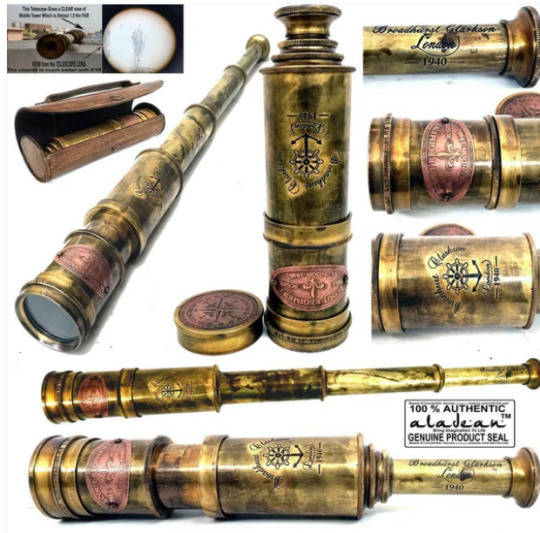
👉 Brass Spyglass Telescope - 12" Pirate Scout Style Gift (20x Zoom)
Crafted in classic vintage style, this telescope brings the spirit of exploration and discovery right to your hands. Whether you're stargazing, admiring landscapes, or just appreciating craftsmanship—this spyglass reflects the same spirit that once helped sailors, scouts, and scientists look deeper into the unknown.
It’s not just a telescope. It’s a symbol of curiosity—just like the one that led us to rediscover the dire wolf.
Add this to your study desk, bookshelf, or collector’s cabinet and let your inner explorer come alive.
#DireWolfFacts#CanisDirus#IceAgePredator#GameOfThronesDireWolf#PrehistoricAnimals#LaBreaTarPits#DireWolfVsGrayWolf#ExtinctAnimals
0 notes
Text
youtube
#zombiebuffalos#shortvideo#mammothelephant#lion#tiger#elephant#dinosaur#mammoth#animation#cowcartoon#cow#animal#animalrevange#animalfights#extinctanimals#zombiemammoth#woollymammothelephant#bigbulls#woollymammoth#animalmammothwar#cartoonanimals#funnyanimals#funnymonkey#Youtube
1 note
·
View note
Text

Remains of Extinct ‘Siberian Unicorn’ Discovered from When Humans Roamed
Read More : https://t.co/ExODjz5DmU
1 note
·
View note
Text

Set of 3 prints canvas wall art The mountains of Europe in the Pleistocene Ice age.
Europe in the Pleistocene were inhabited by a large number of various animals of the mammoth fauna. Some of them are depicted in the picture - a woolly rhinoceros, an elk, a bison, a lynx, a capercaillie, a crow, a cave bear, a Megaloceros giganteus.
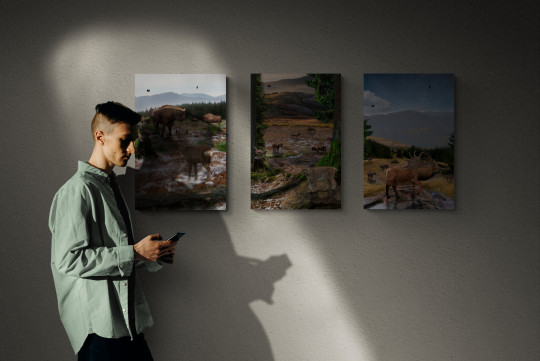
Set of 3 prints canvas wall art The mountains of Europe in the Pleistocene Ice age. Prehistoric triptych wall art for your unique home decor. Gallery wall set for aesthetic room decor. Also, these paintings will help you in the design of a scientific gallery, museum exposition, educational presentation, scientific work, publication of a scientific article in a magazine.
You can choose these images for your brand logo, product branding.
This exclusive and unrepeatable painting can be purchased here:
#aestheticroomdecor#animalswallartprint#artworks#barwalldecor#bathroomwallart#bedroomdecor#birthdaygift#canvaswallart#decorwallset#extinctanimals#extralargewallart#farewellgift#gallerydecorwallset#gallerywallprints#gallerywallset#giftforgeeks#giftforhusband#giftsforboyfriend#grandmagift#homedecoration#iceage#illustration#kitchenart#kitchenwalldecor#lakehousegift#largecanvaswallart#largewallart#modernart#mountainseurope#newhomegift
0 notes
Photo

Perro Fueguino - A Lost Dog
A while ago, I hosted a lil question about underrated species, and Instagram voted that perro fueguino, or the extinct Fuegian dog, needed more recognition. Working with the indigenous people from the Southern Cone of South America, perro fueguino not only provided much-needed warmth to the Selk'nam and other tribes with their body heat, but also may have assisted in hunting. They were eliminated as part of the Selk'nam genocide in the late 19th/early 20th centuries. This is my interpretation of what we know of them, with white or tawny coats, fox-like features, sharp noses and ears, and a medium build. They deserved better. Thank you to @/j.darola on IG for the suggestion!
#theydeservedbetter#extinctdoggo#all my homies miss el perro fueguino#selk'nam people#historicalart#extinctart#justice for perro fueguino#artofmindspice#art_of_mindspice#mindspice#furry#furryartist#furrycommunity#furryfandom#anthro#animalart#furryart#digitalart#perrofueguino#extinctdog#extinctanimal#fuegiandog
8 notes
·
View notes
Text

Extra-Large Deer
Megaloceros giganteus, a large deer from the Pleistocene epoch, with antlers that grew up to 12 feet long from tip to tip, the largest of any known deer.
#paleoart#paleontology#cenozoic#quaternary#pleistocene#deer#megaloceros#extinctspecies#extinctanimal#extinctmammal#artiodactyla#ungulate#digital art#krita
9 notes
·
View notes
Text
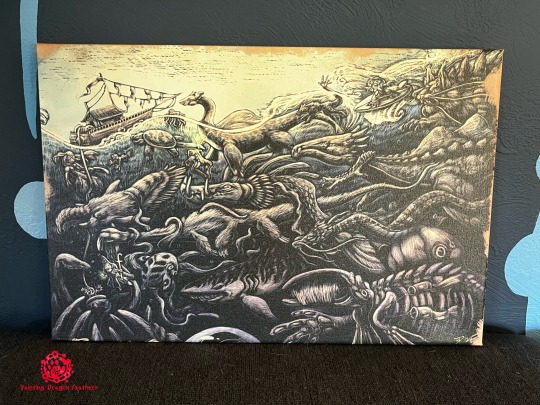
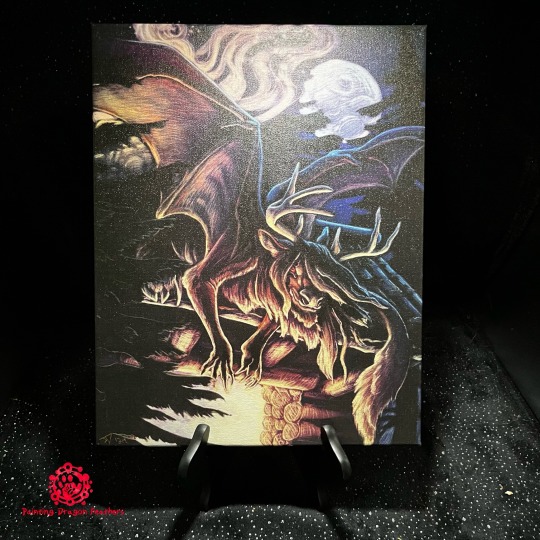
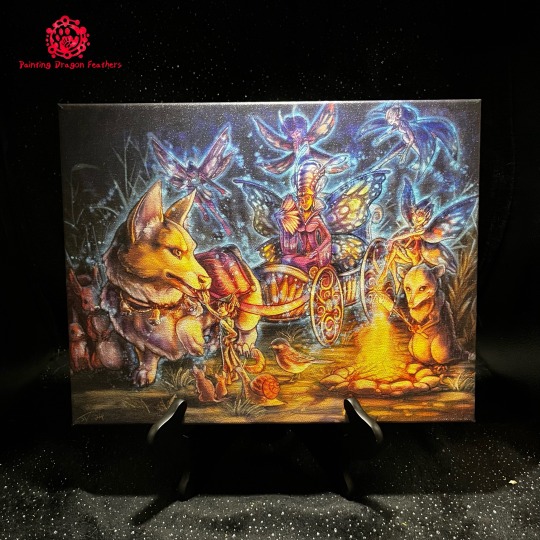
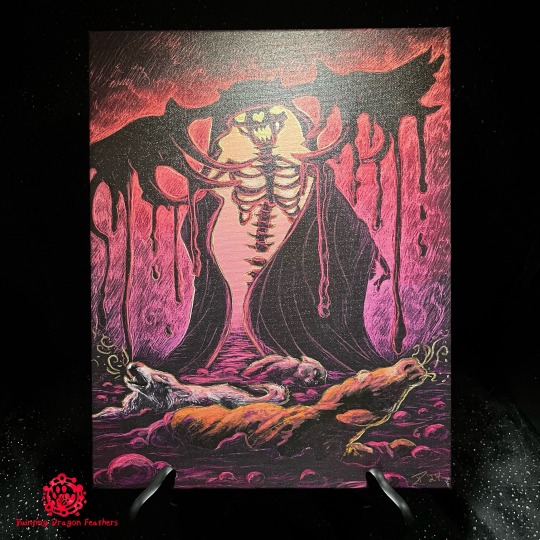
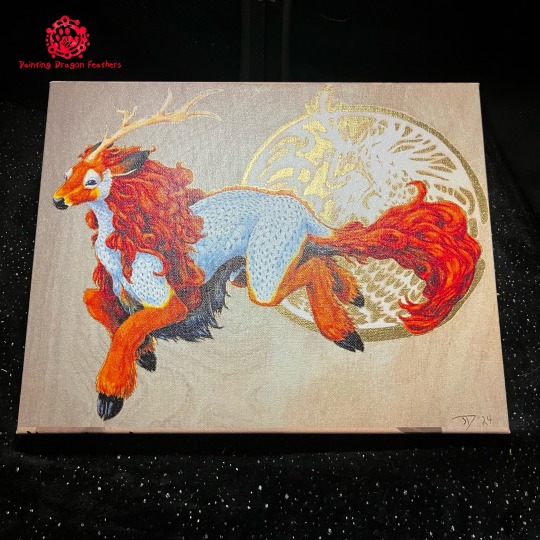
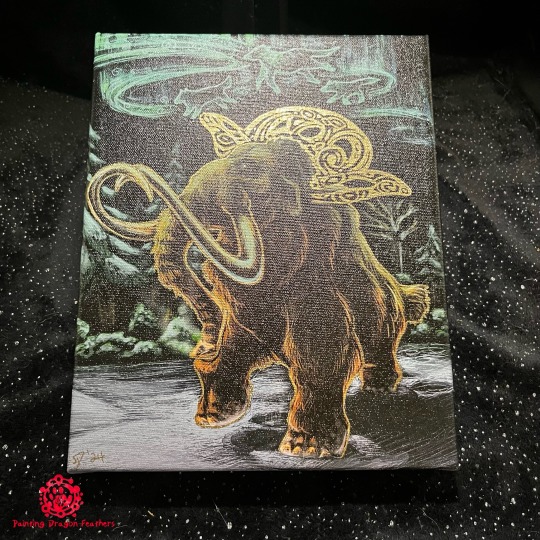
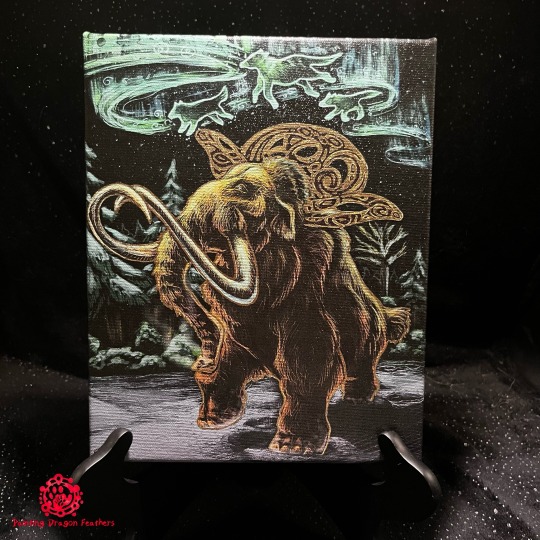
Canvas prints have been restocked at Painting Dragon Feathers in prep for Sci-fi Valley Con, including some new designs—“Arrival of the Fairy Queen”, “Jersey Devil” and in a first, a massive 16” x 24” canvas of “Sea Monsters”. Popular artworks such as “Death” and “Imperial Kirin” have also been restocked—with GILDED ACCENTS. Several other prints feature these hand-embellished gold ink details, they are just REALLY tricky to photograph.
See what’s in stock at the Painting Dragon Feathers booth at Sci-fi Valley, Anthrocon, Tekko, Otakon, and more this summer, or check out the Painting Dragon Feathers online shop year round (info in bio).
#paintingdragonfeathers #art #artist #canvas #jerseydevil #corgi #seamosnters #cryptid #unicorn #kirin #mammoth #extinctanimal #scifivalleycon
#paintingdragonfeathers#art#painting dragon feathers#illustration#fantasy#cryptid#mammoth#woolly mammoth#sci-fi valley con#sci-fi valley con 2024#jersey devil#corgi#fairy#kirin#unicorn
2 notes
·
View notes
Text
youtube
Top 10 Animals We’d Like to See De-Extinct – From Mammoths to Megalodons Top 10 Animals We’d Like to See De-Extinct – From Mammoths to Megalodons #colossalbiosciences #top10 #direwolf op 10 animals we’d like to see de-extinct – from mammoths to megalodons, we’re counting down the most legendary creatures we wish science could bring back. In this wild episode, we explore why these animals went extinct, how they could theoretically return, and what their impact would be on the modern world. From Ice Age giants to prehistoric sea monsters, this list mixes scientific possibility with raw imagination. Whether you're into evolution, dinosaurs, or just want to ride a woolly rhino into battle, this video is for you. Like, comment, and tell us which extinct creature you would bring back! Full Episode link: https://youtube.com/live/bJUhPLpqHVk 🔔𝐃𝐨𝐧'𝐭 𝐟𝐨𝐫𝐠𝐞𝐭 𝐭𝐨 𝐬𝐮𝐛𝐬𝐜𝐫𝐢𝐛𝐞 𝐭𝐨 𝐨𝐮𝐫 𝐜𝐡𝐚𝐧𝐧𝐞𝐥 𝐟𝐨𝐫 𝐦𝐨𝐫𝐞 𝐮𝐩𝐝𝐚𝐭𝐞𝐬. https://www.youtube.com/@DMGGamingPodcast/?sub_confirmation=1 ⭐ ⭐ ⭐ Audio Podcast is currently on your favorite platforms: ApplePodcast:https://ift.tt/oPSB6u2 Spotify:https://ift.tt/ZjrfzbI ✅ Important Links to Follow 🔗 Superlink https://ift.tt/dL7tkpO 🔗 Link Space https://ift.tt/wvJONaY 🔗 Stay Connected With Us. Instagram: https://ift.tt/GZBgRIL Tiktok: https://ift.tt/L48ODmV Twitter (X): https://ift.tt/h1yAdZJ Rumble: https://ift.tt/RtLHkPD Twitch: https://ift.tt/4DgeNAL Discord: https://ift.tt/YcjTeIo 📩 For business inquiries: [email protected] ============================= 🎬Suggested videos for you: ▶️ https://www.youtube.com/watch?v=CEX-oQCEFZI&t=507s ▶️ https://www.youtube.com/watch?v=1fJ5ZszbQZY ▶️ https://www.youtube.com/watch?v=nmOgNmKHUo4&t=342s ▶️ https://www.youtube.com/watch?v=nJg1htr_cwE&t=2s ▶️ https://www.youtube.com/watch?v=EfYXbFzKaDs&t=48s ▶️ https://www.youtube.com/watch?v=M3kAMwDLC6E ▶️ https://www.youtube.com/watch?v=KKSlblSbqNA&t=502s ================================= #DeExtinctAnimals #PrehistoricCreatures #MammothRevival #ExtinctAnimals #Top10List #ScienceAndNature #JurassicComeback #CloneTheseBeasts #WildlifeWonder #MegafaunaMadness via DMG Gaming Podcast https://www.youtube.com/channel/UCg-0IF3L2-ZkdZknea90jlw April 19, 2025 at 01:00AM
0 notes
Text
"Meet Paraceratherium, the largest land mammal that ever lived! This giant rhinoceros roamed the Earth during the Oligocene epoch, towering over modern animals. 🦏
* #GiantMammal
* #Oligocene
* #Paleontology
* #ExtinctAnimals
* #NaturePhotography
* #DeepHistory
* #NaturalHistory

0 notes
Text
youtube
Extinct Animals! https://www.youtube.com/watch?v=vDTXV5LkwE4 News for Kids at LNEnews - Veh's World #extinctanimals #kidsnews #Newsforkids #NevaehCable #animals
0 notes